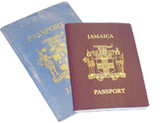Emerging Small Medical Devices
By Lloyd L. Hyde
Medical facilities such as hospitals have reduced their bed capacities over the past three decades. It stands to reason that this trend will continue over the foreseeable future. One of the main reasons for this change is the acceptability of outpatient clinics and to a large extent, the services that they deliver. Many procedures that were formerly done in a hospital setting are now easily performed in a outpatient facility. This then, becomes a win win win situation for the hospital, the patients and the insurance provider. What has given rise to these changes? In my view, there are several, not the least of which are highly portable miniaturized medical devices that are hand held or on table tops. Previously, these devices consumed very large footprints, were hard wired floor or wall mounted and in spaces or large rooms that required heating ventilating and cooling (HVAC). Take for example a cardiac doppler and/or an ultrasound machine which although on a cart, were quite large and cumbersome to move around. Further , they were connected to dedicated electrical outlets and dedicated rooms with HVAC and the like. Not only that, when and if there is a power failure, these devices were not on the emergency generator circuits. Not so for the portable and miniaturized medical devices. Some operate exclusively on battery (DC), while others utilize both alternating current (AC) or direct current (battery) DC for its power source. To this point I have identified just two devices in the portable or miniature category but there are many more.
Some of you may have heard about an APP when used in conjunction with an !phone will measure, record, and display a number of medical parameters and vital statistics. I believe that we will continue to see the miniaturization of medical devices, the establishment of outpatient clinics and the reductions of hospital beds and ultimately the physical size of these facilities.
Permit me to call your attention to a device that was brought into clinical/medical use some sixty (60) years ago. This device known as transcutaneous electrical nerve stimulation (TENS). It is used mainly for the management of pain across the healthcare delivery spectrum. In point of fact, it is believed that in the United States alone there are conservatively speaking about 70,000,000 people with pain. So for these pain sufferers, this device has served them well.
The medical community over the years has managed and treated pain for the most part with certain analgesic and other pain medications. It is understood that much of these meds are fairly addictive, in other words the user could become very dependent for prolong relief. However , the use and application of TENS solves this daunting problem completely. Previously, TENS had to be ordered or prescribed by your physician and to some extent, remains in that realm. In the last three or four years, however, we have seen some TENS devices on some shelves that are available without a script. We are seeing some online offerings , so things are changing in a variety of ways as it relates to the clinical use of this device. Manufacturer of these devices have become quite innovative. I can speak on one such inventor , designer and manufacturer in Illinois, the Dyna Wave Corporation.
What this company has been able to achieve successfully is worth high commendation. From a clinical engineering standpoint , they have succeeded in combining TENS and ultrasound in a single transducer with application for a variety of maladies. It should be understood that this “Smart Sound” device is not available in the stores. It is a desktop and/or table-top and/or roll away device that can be found in physical therapy clinics, rehabilitation facilities , sports medicine, VA health facilities, pain clinics, diabetic challenges, reconstructive and makeover areas, wound care clinics, and labor and delivery. These are just a short list of areas of application for these devices. Further, the manufacturer and clinics using these devices in their practices are reporting results, even cure rates in the highest percentiles. It is important to note that the areas listed in this article are by no means exhaustive. Its application in personal, individual and clinical usages runs across the United States and other parts of the world.
It is certainly a privilege to provide this short article on a small and/or miniature portable medical devices. With utility for safe individual/personal, home, off site clinical and hospital environment.
Lloyd Hyde is a retired Clinical Engineer in Chicago where he serves as Jamaica’s Honorary Consul to Chicago.

